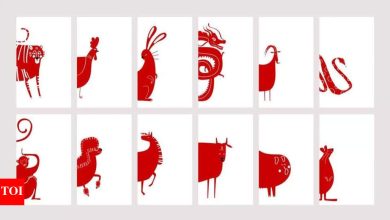How the US-China tariff reached the sky-high level in 3 months

Taipei: The talks planned between the US and Chinese authorities in Switzerland at the end of this weekend this week crippled each other exporters for two countries for more than three months and dragging their economies for two countries for more than three months. Washington and Beijing are entering a conversation with tariffs on each other’s belongings.American duty on Chinese imports stands at 145%, while China’s anti -countercile tariffs on US goods have reached 125%.US President Donald Trump said that he believes that talks could bring tangible progress, and if Beijing gave concessions, he was open to reduce the tariff to a great extent. However, China has repeated the call to Washington to cancel the tariff ahead of the talks. Here is a play-by-play of how the US and Chinese tariffs have reached such a sky-high level since the beginning of Trump’s second term in the office: February 1, 2025: Trump signs an executive order, which applies 10% tariffs to China, as well as 25% of duties on Mexico and Canada. He later announced a 30-day recurrence on Mexican and Canadian tariffs. February 4: 10% tariffs apply to all Chinese imports in the US. China retaliates on the same day that has announced a hurry of counselors including duties on American coal, liquidized natural gas and agricultural machinery. March 4: Trump imposed an additional 10% tariff on all Chinese goods, so that the total level of duties can be extended to 20%. China reacts with tariffs of up to 15% on imports of major American farm products, including chicken, pork, soy and beef, and controls extended on trade with major American companies. March 10: Sugar tariffs and measures declared on March 4 apply. April 2: On Trump’s so -called tariff “Liberation Day”, he announced additional 34% of duties on all Chinese imports, with tariffs on goods from countries around the world. Sweeping tariffs are to be effective on 9 April. April 4: China fights back with 34% tariffs on all American goods, effective from April 10, as well as more export control over rare earth minerals, including other retaliation measures. China has also suspended the import of sorbet, poultry and bonmills from several American companies, connects 27 firms to the list of companies facing trade restrictions, and starts an anti-assertion investigation into the Dupont China Group, a subsidiary of American company Dupont. April 7: Trump has threatened China with an additional 50% tariff if he does not withdraw his 34% mutual tariff. April 9: Trump’s “Liberation Day” tariffs apply. The US increases tariffs on China, which is up to 104%more than the previously declared declared. Beijing takes vengeance with duties of 84% on American goods, effective from 10 April. Trump further increases tariffs by 145%on all Chinese goods, immediately effective. April 11: Effective from April 12, China raises its tariff to 125%on all American goods. Beijing says that it will not increase any kind of duties. May 6: The Trump administration announced that Treasury Secretary Scott Bassant and American Trade Representative Jaimison will meet with their Chinese counterparts in Greer Geneva. China will be represented in talks by Vice Premier Hey Lifeng.




